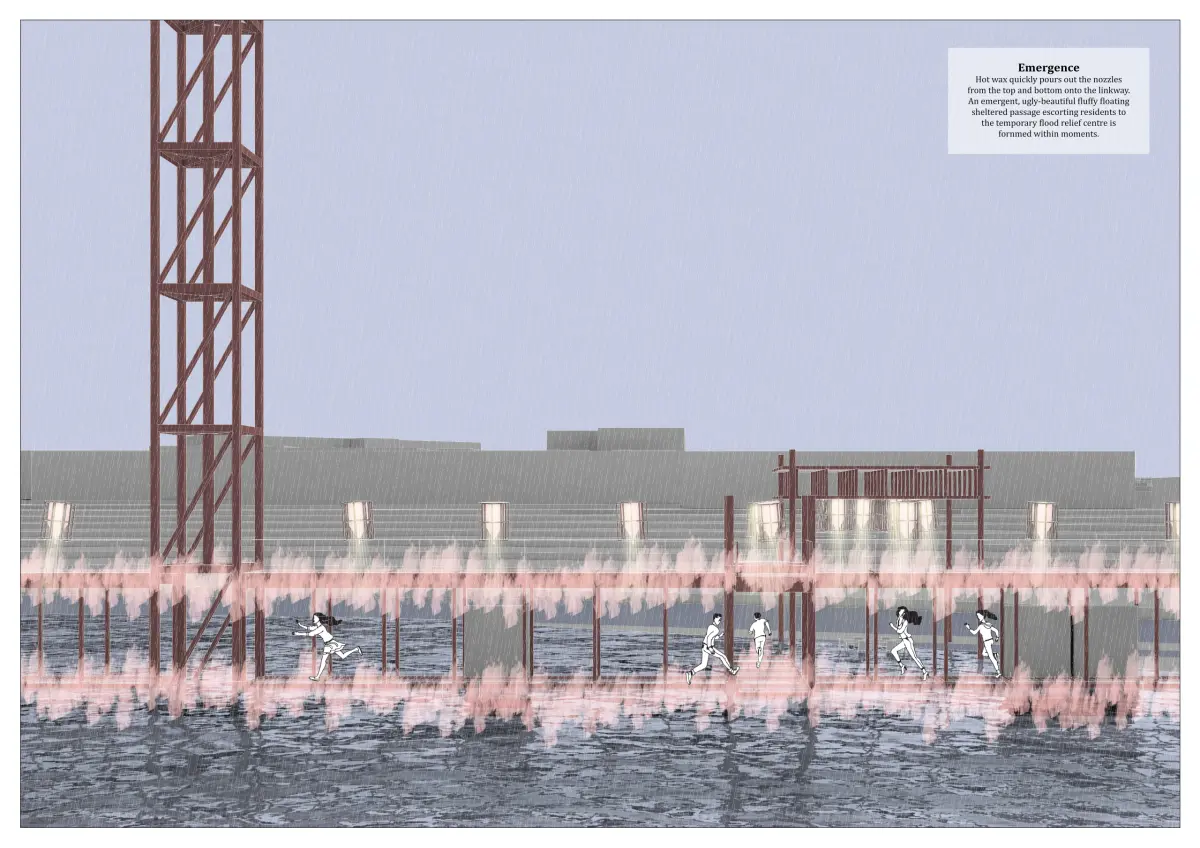
Antifragility and its Architectural Implications
BY Leong Lin Chin
SUPERVISED BY Adj Asst. Prof. Wu Yen Yen
STUDIO THEME ALTERNATE HISTORIES, PERIPHERAL ASSOCIATIONS
Abstract
The fragile succumbs to stressors; the resilient stays the same; but the antifragile gains from stressors. Antifragility is a concept coined by Nassim Taleb in his book Antifragile, where he discussed how some things flourish when exposed to stressors. We know for fact that fragile is not good, but in an increasingly volatile, uncertain, complex and ambiguous world, it is no longer enough to just be resilient because we do not just want to return to the same state after every stressor; we want to gain from and emerge better from them. Simply put, the concept of antifragility is two parts: first, the presence of a stressor and second, the need to transform to surmount and thrive under the stressor. This thesis postulates the fundamental principles of antifragility in the field of architecture are as follows:
Morphogenesis/Emergence, Hybridity/Reversibility, Reproducibility on Different Sites, Elemental Replacement, People Authorship/Distributed Network.
This thesis proposes that in seeking antifragility, architecture transcends itself and becomes instead a device that is used to produce emergent architectural forms. The architect does not design architecture per se, but simply the systems in which these emergent architectural forms thrive. The second semester kicked off via taking a materialist approach, as the various emergent forms of paraffin wax, a substantial by-product of petroleum refining, are investigated, documented and their implications materialized. This thesis is set in point in time in the future when debilitating climate change has made floods a frequent occurrence in many low lying areas in Singapore, and one such neighborhood particularly affected is Tanjong Katong. Two interventions, The Hybrid Street Lamps and The Emergent Flood Relief Center are proposed on two nearby sites in Tanjong Katong, each taking a different approach to antifragility.
Supervisor Comments
Architecture, according to the ideas set out by Nassim Nicholas Taleb in his book “Antifragile: Things That Gain from Disorder” is anything but antifragile. Re-examining the traditional tenets of architecture in a post-Covid19 world, Lin Chin’s investigation into a different definition of our discipline is timely, necessary and thought-provoking. Centered around concepts of plasticity, self-organisation and crowd authorship, Lin Chin’s thesis design implored for a reset in design methodology, building material, re-calibration of place, time in hopes of arriving at a plausible new zeitgeist where architect, site, order, form etc. are systematically deconstructed and a new paradigm arises as an even more formidable way of architectural thinking and where design may transcend materiality.
- Adj Asst. Prof. Wu Yen Yen